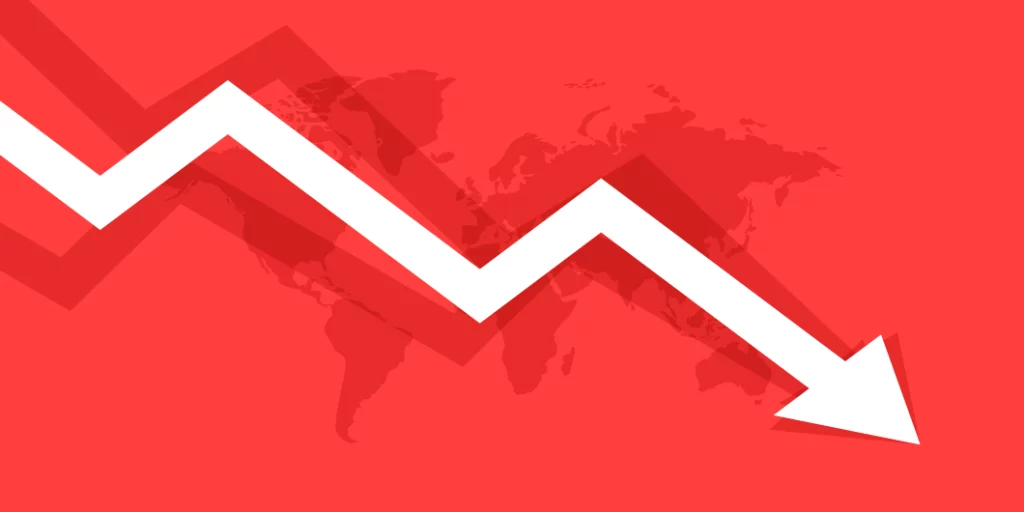
Understanding Deflation: Causes, Effects, and Economic Impact
In recent years, the global economy has experienced various fluctuations, with inflation and deflation being two critical phenomena influencing markets and daily life. While inflation refers to the general rise in prices, deflation signifies a sustained decrease in the general price level of goods and services. At first glance, falling prices might seem beneficial, but this can have complex and far-reaching effects on the economy.
Causes of Deflation
Deflation doesn’t occur in a vacuum; it’s the result of multiple interconnected factors:
- Decrease in Money Supply: When there’s less money circulating in the economy, consumer spending can decline, leading to lower demand for goods and services. This reduction in demand can prompt businesses to cut prices to attract buyers, contributing to this.
- Reduced Consumer and Business Spending: Economic uncertainty or decreased consumer confidence can cause both consumers and businesses to spend less. This drop in expenditure can lead to a decrease in aggregate demand, prompting businesses to lower prices, which may lead to deflation.
- Technological Advancements and Increased Productivity: Innovations and improvements in production processes can lead to an oversupply of goods. When supply outpaces demand, prices may fall, contributing to deflationary pressures.
- Decline in Aggregate Demand: A general reduction in the demand for goods and services across the economy can lead to businesses lowering prices to stimulate sales, resulting in deflation.
- Debt Deflation: When the real value of debt increases due to falling prices, borrowers may struggle to repay loans, leading to defaults. This can cause banks to tighten lending, reducing the money supply and further suppressing demand, creating a deflationary spiral.
Effects of Deflation on the Economy
While lower prices might seem advantageous, deflation can have several adverse effects:
- Reduced Business Profits: As prices fall, businesses may experience declining revenues, making it challenging to cover operational costs. This situation can lead to cost-cutting measures, including wage reductions or layoffs.
- Higher Unemployment Rates: To maintain profitability amid falling prices, businesses might reduce their workforce, leading to increased unemployment.
- Increased Debt Burden: For borrowers, deflation means that the real value of their debt rises, making it harder to repay loans. This increased debt burden can lead to higher default rates and financial instability.
- Economic Recession Risk: The combination of reduced spending, lower business profits, and higher unemployment can lead to a contraction in economic activity, potentially resulting in a recession.
Deflation vs. Inflation: Key Differences
Understanding the distinctions between deflation and inflation is crucial for grasping their impacts on the economy:
| Factor | Deflation | Inflation |
| Definition | Falling prices | Rising prices |
| Cause | Reduced money supply, low demand | Increased money supply, high demand |
| Impact on Consumers | Increased purchasing power | Decreased purchasing power |
| Impact on Businesses | Lower revenues, potential job losses | Higher revenues, potential wage increases |
| Example | Japan’s Lost Decade (1990s–2000s) | Hyperinflation in Zimbabwe (2000s) |
Real-World Examples of Deflation
Deflation has manifested in various economies, leading to significant challenges:
- China’s Recent Deflationary Pressures: In March 2025, China experienced deflation, with both consumer and factory-gate prices declining. The Consumer Price Index (CPI) fell by 0.1% year-on-year, marking the second consecutive month of decline. This deflation was attributed to weak domestic demand, falling international crude prices, and reduced energy demand. The situation was further exacerbated by rising unemployment and escalating trade conflicts, particularly with the United States.
- Japan’s Lost Decade: Following the collapse of its asset price bubble in the early 1990s, Japan entered a prolonged period of economic stagnation characterized by deflation. Over this period, nominal GDP declined, real wages fell, and the economy struggled with persistent deflationary pressures.
How Governments and Central Banks Combat Deflation
To counteract deflation and stimulate economic activity, governments and central banks may implement several strategies:
- Expansionary Monetary Policy: Lowering interest rates and increasing the money supply can encourage borrowing and spending, helping to raise demand and prices.
- Quantitative Easing (QE): Central banks may purchase financial assets, such as government bonds, to inject money into the economy, aiming to lower long-term interest rates and promote lending.
- Fiscal Stimulus Programs: Governments can increase public spending on infrastructure projects, provide tax cuts, or offer subsidies to boost demand and create jobs.
- Wage and Price Controls: In extreme cases, governments might intervene directly to control wages and prices to prevent deflationary spirals.
Deflation, while it might seem advantageous due to falling prices, can lead to reduced economic activity, higher unemployment, and increased debt burdens. It’s often a signal of underlying economic challenges, such as weak demand or overproduction. Understanding the causes and effects of deflation is essential for policymakers, businesses, and consumers to navigate economic cycles effectively and implement appropriate measures to maintain economic stability.